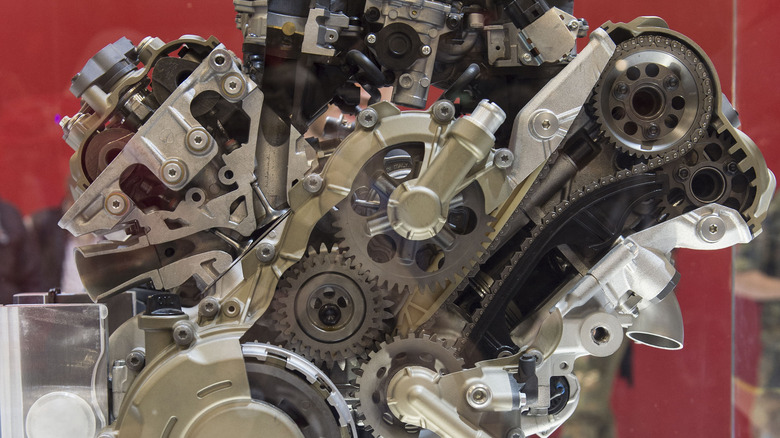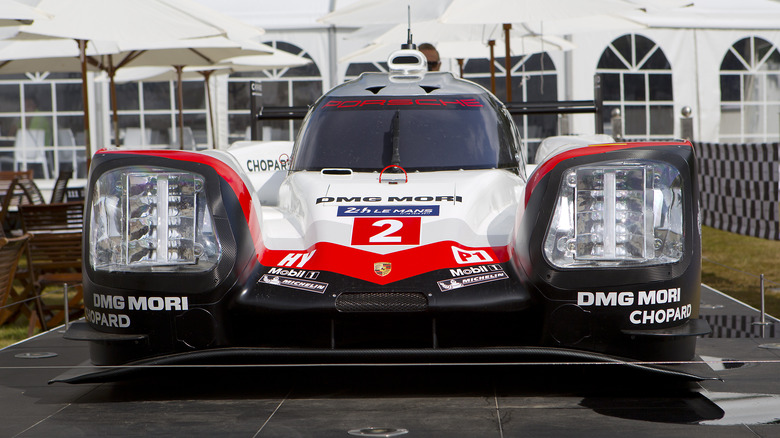
Marc Pfitzenreuter/Getty Images
Hardcore gearheads are well-versed in engine nomenclature, but for folks whose car knowledge ends with the difference between a manual and automatic transmission, engine designations can seem inscrutable. At a fundamental level, most engines are labeled with a «V» or an «I» and an even number from 4 to 12. The number tells you how many cylinders an engine has, and the letter indicates how they are arranged.
«I» — or straight — engines have their cylinders arranged in a single row, while «V» engines have two opposed banks of cylinders. V8 and V6 engines are common in passenger cars and light trucks, although I6 engines are among some of the auto industry’s most reliable. V6 engines are still more popular for their smaller form factor, and a V6 can be used as the base engine in a car that can also be offered with a V8 as an option.
V4 engines are most often found in high-performance motorcycles like the limited edition Ducati Superleggera V4, and the Italian manufacturer’s 208-horsepower Streetfighter V4, which SlashGear reviewed last year. V4 engines are rarely found in cars, though, appearing only in a select few production model Lancia, Saab, and Ford models. So if the V4 is good enough for the world’s premier maker of superbikes, why don’t we see more V4 engines in cars?
The 1922-1931 Lancia Lambda was V4-powered
A gargantuan 19-liter V4 was used to power J. Walter Christie’s entry in the 1907 French Grand Prix, but the first production car to use a V4 was the 1922 Lancia Lambda: The automobile used an aluminum block and single cylinder head across the two banks of cylinders, which sat at a 20-degree angle from each other. The Lambda’s independent suspension and front brakes were remarkable innovations for the time, and the stylish roadster was popular with luminaries like movie star Greta Garbo and Italian race driver Ermenegildo Strazza.
Although the Lambda’s production run ended in 1931, Lancia continued to use V4 engines until 1976. By that point, Ford had implemented two different V4 engines: the 1.3-1.7 liter Taunus, and the 1.7-2.0 liter Essex. The Taunus was used between 1962 and 1981 in Taunus, Capri, and Transit models, and the Essex appeared between 1965 and 1977 as an option in Transit vans.
The 1970-74 Saab Sonnet III also used a V4 engine; the configuration’s short block made it ideal for a longitudinal mounting in the Sonnet’s narrow engine bay.
The V4’s design made it better balanced than I4 engines, particularly at high RPMs. V4s are more complex than I4 engines, though; requiring two separate cylinder heads and exhaust manifolds. The wider, shorter layout of a V4 engine also makes it more difficult to mount alternators, air conditioner compressors, turbochargers, and the like.
[Featured image by Mr. Choppers via Wikimedia Commons | Cropped and scaled | CC-BY 3.0]
Porsche used a V4 to win at LeMans

Michael Cole/Getty Images
Certain components of a V4 engine are also harder to access than those on an I4 engine, making maintenance more difficult and expensive. In the long run, economic concerns all but killed the V4. Higher development and manufacturing costs versus inline-four and V6 engines ultimately led most automakers to choose cheaper I4, V6, and V8 options. The rarity of V4 engines in factory models eventually led to another disadvantage: parts and expertise for these engines are in short supply compared to I4, V6, and V8 engines.
The V4 remains in use in certain limited applications, however. Its resistance to vibration at high revolutions makes it a good racing engine. The Porsche 919 hybrid used a 500 horsepower V4 and a 400 horsepower electric motor to win the 24 Hours of LeMans in 2015, 2016, and 2017.
Porsche left the World Endurance Championship series after the 2017 season to focus on Formula E, but built a race-optimized, one-off 919 Evo as a tribute to those championship cars the following year. Porsche engineer Stephen Mitas told Car and Driver, «The budget for the [Evo] project was very modest and the time to develop and build the car was quite short.»
His team removed the fuel restrictors from the V4 that drove the back wheels, boosting output to 720 horsepower. That car set a lap record at Germany’s Nürburgring Nordschleife that year, completing the 73-turn, 12.9 mile circuit in 5: 19.55.